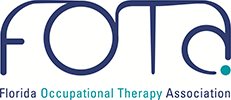Contemplating the Capstone
by Pamela Kasyan-Howe, OTD FOTA SIS Fieldwork
If you have been listening to the conversations about the entry level doctorate, then you may be wondering why the discussion is relevant to you and your practice. A little background story about changes in higher education may be helpful, especially for those who graduated before 2010 since there used to be less federal and state guidance on credit hour requirements for specific degrees. For example, this means one university used to be able to offer a bachelor's degree in occupational therapy for 45 credits, while another university could offer the same bachelors degree in occupational therapy for 75 credits. Do you remember how many credit hours you needed to graduate? Well, you might actually have had enough credit hours that when you graduated with your bachelors or masters degree you may have actually had enough credits to qualify for a doctoral degree in terms of today’s standards.
My friend likes to tell a story about how back in the day when he and his wife both started graduate school at the same time his wife graduated with her masters degree in marketing and it still took him an additional two terms, or 30 credits more, to have his masters degree in occupational therapy.
As higher education has expanded, so has the organizations dedicated to developing and studying matrices in order to inform universities on the number of credits to graduate with a degree, also known as time to degree (Complete College America, 2017). Accreditation organizations have taken steps to contextualize and guide credit hours for degree programs. Currently, with the amount to teach an entry level student the amount of credit hours tend to meet the standard of a doctoral degree. What does this mean for future students? This means there are students who will choose to get the terminal doctoral degree in occupational therapy, like other professions, however some students may choose to also continue to take the route of completing a masters degree. As future students are looking at professions to pursue, they can see that other professional doctoral programs, such as marketing, law, and pharmacy, also have similar credit hours for a doctoral degree. Students starting out with the entry level doctoral degree are following in the same path as those of us who graduated with an entry level bachelors degree before 2007, or masters degree after 2007. These students are choosing to enter the profession with a doctoral degree are choosing to enter the profession with the most advanced entry level degree.
What does this mean to you and your practice? The growth of the entry level doctoral degree provides an opportunity to work together to improve health outcomes for the populations we serve. Partnerships between forward thinking practitioners and doctoral programs can join together to solidify capstone projects and experiences which further mutual goals of exceptional client care. For example, if you are trying to develop a new program at your practice, serve a population you believe deserves more advocacy, or implement policy changes in the community, reach out to your local OTD program. The doctoral coordinator may have a student who is willing to assist you in tackling this new opportunity, as most doctoral students would love to use and further develop their indepth knowledge of the profession in order to help you!
Reference
Complete College America. (2017). Common college completion metrics technical guide.
Retrieved from https://completecollege.org/wpcontent/uploads/2017/08/2017MetricsTechnicalGuide.pdf
